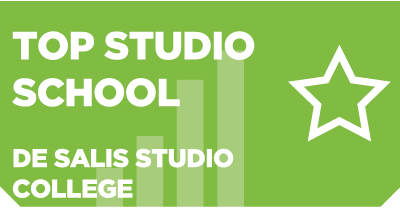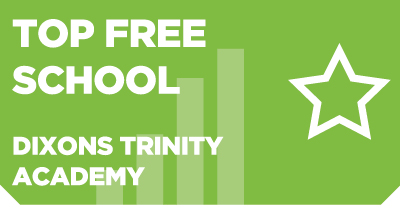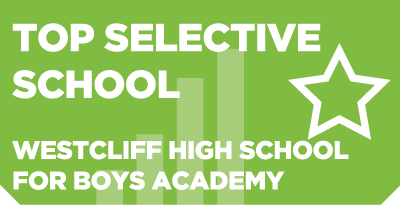The Department for Education released its revised GCSE results for the 2016-17 exams on January 25, and Schools Week has taken a deep dive into the data to see how disadvantaged pupils fared at different types of schools.
Pupils are defined as “disadvantaged” if they have been eligible for free school meals in the past six years (from year 6 to year 11), if they are recorded as having been looked after for at least one day, or if they are recorded as having been adopted from care.
We explored their progress through the Progress 8 measure results for four types of school promoted in the government’s reforms.
Progress 8 was created as the headline indicator of school performance in 2016, and is used to determine whether a school is above the floor standard or “coasting”.
For the 2017 exam series, the measure has been calculated using a points system in which pupils jumping from a grade B to an A are awarded 1.5 extra points, while the difference between a G grade and F is just 0.5. All other grades are separated by a score of one.
Overall, there were 69,261 disadvantaged pupils at the end of key stage 4 in 2017, compared with 458,598 pupils who were not disadvantaged.
The average Progress 8 score for disadvantaged pupils was 0.48, compared to 0.04 for all other pupils.
Top findings
Selective schools had the widest range of progress 8 scores for disadvantaged pupils at flagship schools in 2017, with a gap of 4.09 between the lowest and highest scores. They were followed by free schools with 3.75, then studio schools at 2.71 and UTCs at 2.03.
The lowest progress 8 score for disadvantaged pupils at flagship schools was at Colyton Grammar School in Devon, which scored -2.75.
The highest progress 8 score for disadvantaged pupils at flagship schools was at Dixons Trinity Academy in Bradford, which achieved 1.35 (the highest for disadvantaged pupils at any type of school was 1.66 at Tauheedul Islam Girls’ High School, a mainstream converter academy in Blackburn).
UTCs
The range of Progress 8 scores for disadvantaged pupils studying at UTCs spanned from a disappointing -2.08 at UTC@harbourside to -0.05 at Humber UTC.

UTC@harbourside, a marine engineering specialist college in Newhaven, East Sussex, had 14 disadvantaged pupils at the end of key stage 4. Humber UTC, specialising in engineering and renewable energy and based in Scunthorpe, had 24. Both UTCs have been open since September 2015.
No UTCs had a positive Progress 8 score in 2017. In 2016, Heathrow Aviation Engineering UTC achieved a strong Progress 8 score of 0.22 overall, and a progress score of 0.24 for disadvantaged pupils. But in 2017 its score was -0.31 overall and -0.24 for disadvantaged pupils.
Leigh UTC also gained a positive Progress 8 score for disadvantaged pupils 2016 at 0.02, though its overall Progress 8 score was -0.09. In 2017 its score was -0.42 overall and -0.67 for disadvantaged pupils.
Overall, the DfE recorded 40 UTCs with 2,555 pupils at the end of key stage 4 in 2017, achieving an average score of -0.86.
Studio Schools
The Da Vinci Studio School of Science and Engineering was the lowest-performing studio school with a score of -2.4 for disadvantaged pupils, while De Salis Studio College had the highest result at 0.31.

Da Vinci had to close last summer, and had 25 disadvantaged pupils at the end of key stage 4, while De Salis had six.
The latter is based in Hayes and opened in September 2014. It also performed well in 2016, when it entered 29 per cent of its disadvantaged pupils for the EBacc – and 29 per cent achieved it. Its Progress 8 score in 2016 was 0.22.
Four studio schools achieved positive Progress 8 scores in 2017. The other three were Ikb Academy in Bristol, Waverley Studio College in Birmingham and Studio West in West Denton, Newcastle.
Studio West, Waverley Studio College and De Salis also recorded positive Progress 8 scores for disadvantaged pupils in 2017.
In 2016 three studio schools had positive scores overall, but only one, Space Studio Banbury, had a positive score, of 0.03, for its disadvantaged pupils.
There were 34 studio schools with 1,258 pupils at the end of key stage 4 in 2017, and they earned an average score of -0.68.
Free Schools
Discovery School had the lowest Progress 8 score for disadvantaged pupils of any free school in England at -2.4, while Dixons Trinity Academy had the highest at 1.35.
Discovery is a technical school for 13- to 19-year-olds from Tyne and Wear, Northumberland and County Durham, focusing on science, technology, engineering and mathematics. Its Progress 8 score overall was -1.45, down on 2016 when it scored -0.8 and -1.22 for disadvantaged pupils.

Dixons had 38 disadvantaged pupils at the end of key stage 4, 36 of whom took part in the progress 8 measure. Discovery had just eight.
Dixons Trinity Academy scored 1.22 overall this year and did not have a Progress 8 score in 2016.
A total of 29 free schools achieved a positive score overall, and 16 reached a positive score for disadvantaged pupils. In 2016 these figures were 10 and six.
Overall, the DfE recorded 53 free schools with 3,362 pupils at the end of key stage 4 in 2017, achieving an average progress 8 score of 0.15.
Selective
For selective schools, Progress 8 scores for disadvantaged pupils ranged from -2.75 for Colyton Grammar School in Devon, to 1.34 for Westcliff High School for Boys Academy in Southend-on-Sea.

Colyton had an overall score of -2.54 in 2017, a significant decline compared with its score of 0.37 in 2016. Westcliffe had an overall score of 0.75 in 2017, up on its 0.66 in 2016.
A total of 37 selective schools recorded negative scores for their disadvantaged pupils in 2017. The highest overall Progress 8 score for selective schools in 2017 was at The Tiffin Girls’ School in Kingston, which achieved an impressive 1.21, up on 0.72 in 2016. Its score for disadvantaged pupils was a respectable 0.4, though it only had seven pupils falling into this category.







Are you sure about “The average Progress 8 score for disadvantaged pupils was 0.48, compared to 0.04 for all other pupils.”
It is surprising that disadvantaged is showing significantly higher than other – did you mean -0.48 ?